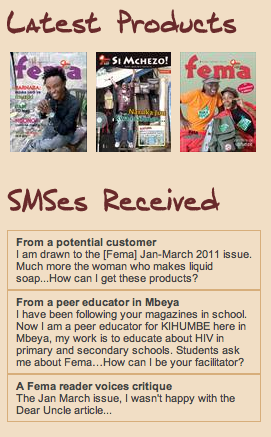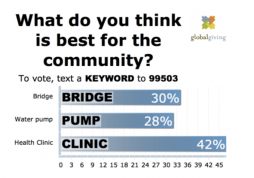What did not work? What were the challenges?:
It has been challenging to help the audience understand how to send SMS to an automated service. If someone misses a space or spells a key word incorrectly, for example, the SMS is marked “invalid” and ends up in the trash box. Similarly, if people send a message that is over the 160-character limit of a text message, the second half of the message is also marked invalid. Another issue may be cost. While there is a cost to send a text message, sending an SMS to a shortcode actually carries a slightly higher cost.
 For the largest civil society media platform in Tanzania, back talk is good.
For the largest civil society media platform in Tanzania, back talk is good.